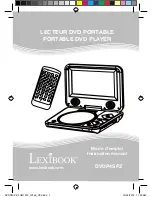
DYNA SERIES 5/97
Page 4
60707-110
PREPARING THE UNIT
substance will clog the carburetor and will not burn
properly. The use of a fuel additive, such as STA-BIL, or an
equivalent will minimize the formation of fuel gum deposits.
If a unit has been out of operation for an extended period of
time it is best to drain old fuel from the engine and replace
with fresh fuel before attempting to start.
BATTERY INSTALLATION
If you intend to use the power plant’s electric start system,
you will need to purchase a battery to operate it. Units
equipped with a recoil or rope start will operate
satisfactorily without a battery. A twelve volt battery, group
U1 rated at 190 CCA or larger is recommended for this
electric start engine generator set. Follow the battery
manufacturer's recommendations for servicing and
charging prior to use. .
CAUTION: EQUIPMENT DAMAGE
These electric start engines are NEGATIVE GROUND.
Use extreme caution when connecting the battery.
Connect the NEGATIVE battery terminal to GROUND.
For your safety always connect the positive battery cable to
the “bat+” terminal first. Then connect the negative battery
cable to the “bat-” terminal. Make sure all connections are
clean and tight. Reverse the sequence when
disconnecting, disconnect the negative cable first. These
engines produce enough direct current to keep a battery
charged under normal operating conditions, but were not
intended to be used as a battery charger.
WARNING: PERSONAL INJURY
Lead acid batteries produce explosive hydrogen gas
when charging. Keep sparks, flames, and burning
cigarettes away from the battery. Ventilate the area
when charging or using the battery in an enclosed
space. Lead acid batteries contain sulfuric acid, which
causes severe burns. If acid contacts eyes, skin or
clothing, flush well with water. For contact with eyes, get
immediate medical attention.
BATTERY CHARGING
Units equipped with electric start have a small flywheel
charger built into the engine flywheel assembly for
recharging the starting battery. This flywheel charger
generates a small AC current that passes through a diode
at the end of the charging lead to produce a DC charging
current of about 1 AMP. This circuit is not designed to be
used as a battery charging circuit to recharge dead
batteries.
The D1750 is equipped a 10 AMP 12VDC charging circuit
which is designed to recharge dead batteries. A set of
battery charging leads has been provided with the unit.
These battery charging leads consist of a 12V DC
connector lead wire and battery clip assemblies. There is
a mating connector mounted in the receptacle panel on the
unit. If the positive and negative battery leads are
accidentally shorted, or are incorrectly connected to the
battery, the automatic resetting DC circuit breaker in the
control panel will trip to protect the generator and the
battery. This breaker will reset automatically, restoring the
voltage.
UNPACKING
CAUTION: EQUIPMENT DAMAGE
THIS UNIT HAS BEEN SHIPPED WITHOUT OIL. Failure
to maintain the engine oil at the proper level will result in
serious engine damage.
When you unpack your new ENGINE GENERATOR be sure to
remove all the information sheets and manuals from the
carton.
1. This power plant was in good order when shipped.
Inspect the power plant promptly after receiving it. If
damage is noted, notify the transportation company
immediately; request proper procedures for filing a
“concealed damage” claim. Title to the equipment and
responsibility for filing a claim rests with you when a
generator is sent F.O.B. shipping point. Only you can
legally file a claim.
2. Before proceeding with the preparation of your new
engine generator set for operation, take a couple of
minutes to insure that the unit you have received is the
correct model and review the specification pages in
this manual to insure that this unit fits your job
requirements.
3. After removing the engine generator from the carton
locate and remove the shipping strap attached to the
generator shock mount. See attached tag for removal
instructions.
UNIT PREPARATION
Before your engine generator was shipped from our factory it
was fully checked for performance. The generator was load
tested to its full capacity, and the voltage and frequency were
carefully checked and adjusted.
Lubrication
Before starting the engine, fill the crankcase to the proper
level with a good quality oil. The recommended grade of oil
and quantity of oil required is listed in the engine operator's
manual. The necessity of using the correct oil, and keeping
the crankcase full cannot be overemphasized. Engine
failures resulting from inadequate or improper lubricant are
considered abuse and are not covered by the generator or the
engine manufacturer's warranty.
Gasoline Fuel
When using gasoline always use a good grade of unleaded
fuel. Leaded gasoline may be used if unleaded is not
available. Gasoline containing alcohol, such as gasohol is
not recommended. However, if gasoline with alcohol is used,
it must not contain more than 10 percent Ethanol and must
be removed from the engine during storage. DO NOT use
gasoline containing methanol. Always insure that the fuel is
clean and free of all impurities.
WARNING: FIRE DANGER
Gasoline and its fumes are VERY explosive when proper
precautions are not taken.
Never use gasoline that has been stored for an extended
period of time as the fuel will lose it's volatile properties and
you will be left with only the varnish residue. This varnish like






























